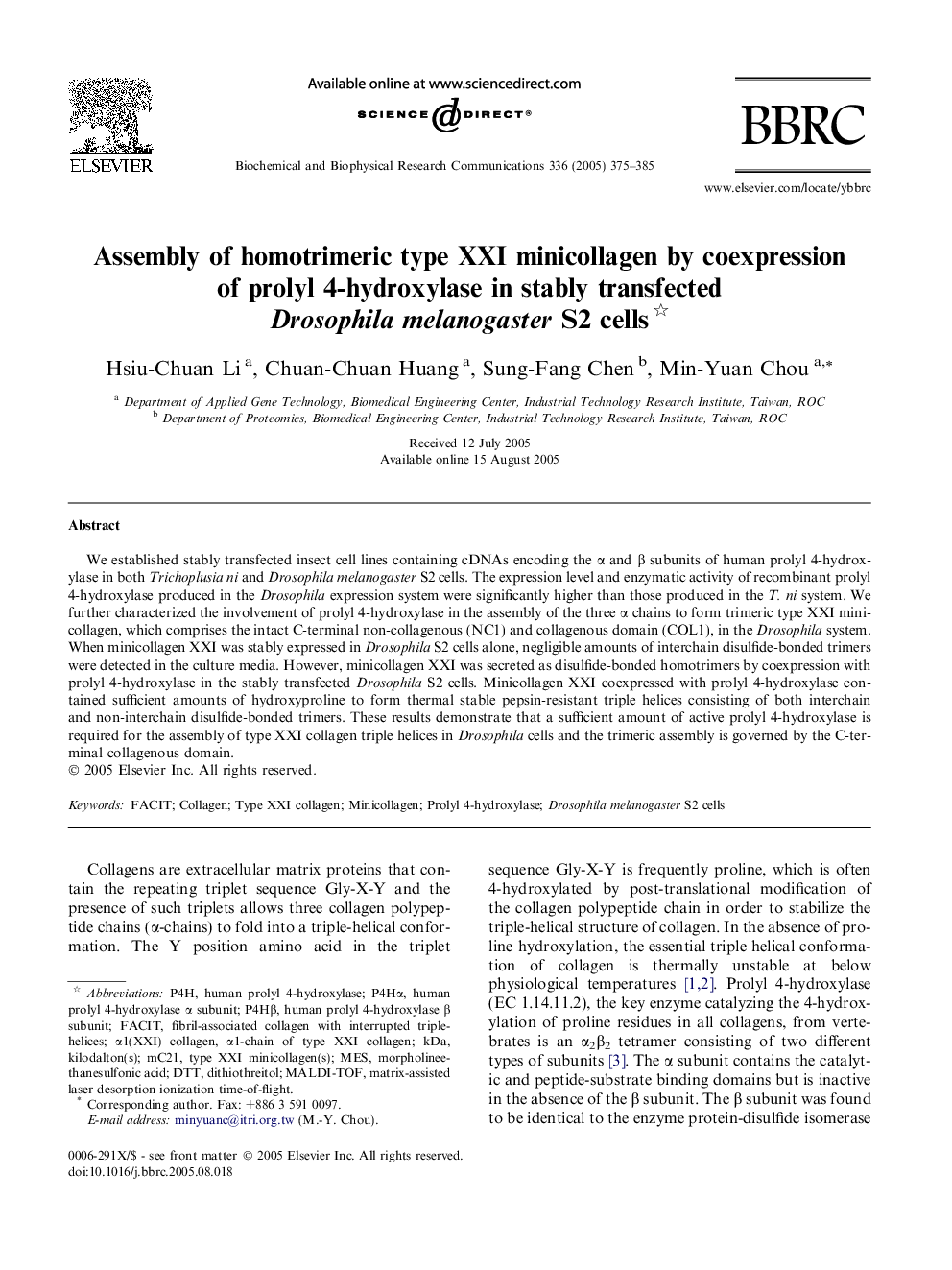| Article ID | Journal | Published Year | Pages | File Type |
|---|---|---|---|---|
| 10769523 | Biochemical and Biophysical Research Communications | 2005 | 11 Pages |
Abstract
We established stably transfected insect cell lines containing cDNAs encoding the α and β subunits of human prolyl 4-hydroxylase in both Trichoplusia ni and Drosophila melanogaster S2 cells. The expression level and enzymatic activity of recombinant prolyl 4-hydroxylase produced in the Drosophila expression system were significantly higher than those produced in the T. ni system. We further characterized the involvement of prolyl 4-hydroxylase in the assembly of the three α chains to form trimeric type XXI minicollagen, which comprises the intact C-terminal non-collagenous (NC1) and collagenous domain (COL1), in the Drosophila system. When minicollagen XXI was stably expressed in Drosophila S2 cells alone, negligible amounts of interchain disulfide-bonded trimers were detected in the culture media. However, minicollagen XXI was secreted as disulfide-bonded homotrimers by coexpression with prolyl 4-hydroxylase in the stably transfected Drosophila S2 cells. Minicollagen XXI coexpressed with prolyl 4-hydroxylase contained sufficient amounts of hydroxyproline to form thermal stable pepsin-resistant triple helices consisting of both interchain and non-interchain disulfide-bonded trimers. These results demonstrate that a sufficient amount of active prolyl 4-hydroxylase is required for the assembly of type XXI collagen triple helices in Drosophila cells and the trimeric assembly is governed by the C-terminal collagenous domain.
Related Topics
Life Sciences
Biochemistry, Genetics and Molecular Biology
Biochemistry
Authors
Hsiu-Chuan Li, Chuan-Chuan Huang, Sung-Fang Chen, Min-Yuan Chou,
